Piston Rings OE Pistons
Zetec 2.0 | BlackTop | ST170 | BRISCA | Piston Ring Set HEPOLITE 1 Cyl

Piston Rings OE Pistons
MINI R50 | R52 | R53 | Cooper | Cooper S | JCW | HEPOLITE Piston Rings 1 Piston

Piston Rings OE Pistons
Ford Cross Flow | Xflow | X Flow | 711M | HEPOLITE Steel Piston Rings

Piston Rings OE Pistons
MINI R56 | N14 | N18 | Cooper S | JCW | HEPOLITE DLC Piston Rings

Piston Rings OE Pistons
BMW S65 | S85 | E90 | E92 | E93 | E60 | M3 | M5 | M6 | HEPOLITE Piston Rings

Piston Rings OE Pistons
Ford Focus RS MK2 | ST225 | RS500 | HEPOLITE Piston Rings 1 Cyl

Piston Rings OE Pistons
Pinto | RS2000 | Sierra | Capri | Cortina | HEPOLITE Piston Rings 1 cylinder

Piston Rings OE Pistons
Ford EcoBoost 2.0 | Focus ST MK3 | HEPOLITE Piston Rings 1 Cyl 1.2 / 1.5 / 2.0mm

Piston Rings OE Pistons
BMW S54B32 | M3 E46 | Z3 | Z4 | HEPOLITE Piston Ring 1 Cyl Steel Nitrided

Piston Rings OE Pistons
Ford 1.6 EcoBoost | ST180 | ST200 | HEPOLITE Piston Rings 1 Cyl

Piston Rings OE Pistons
Ford Duratec 2.0 | ST150 | HEPOLITE 87.50mm Bore Piston Ring Set 1 Cyl

Piston Rings OE Pistons
Cosworth YB | Sierra | Escort | All Models | HEPOLITE Steel Piston Rings 1 Cyl

Piston Rings OE Pistons
Ford EcoBoost 2.0 | Focus ST MK3 | HEPOLITE Piston Rings 1 Cyl 1.2 / 1.2 / 2.0mm

Piston Rings OE Pistons
BMW S63B44 | M5 | M6 | X5 | X6 | HEPOLITE Piston Rings 1 Cyl 1.5mm Top Ring

Piston Rings OE Pistons
BMW S63B44 | M5 | M6 | X5 | X6 | HEPOLITE Piston Rings 1 Cyl 1.2mm Top Ring

Piston Rings Forged Pistons
Race Ringset 90.00 mm 1.00 x 1.20 x 2.80 mm For JE, Wisco, CP, Omega Etc Pistons

Piston Rings Forged Pistons
Race Ringset 87.50 mm 1.00 x 1.20 x 2.80 mm For JE, Wisco, CP, Omega Etc Pistons

Piston Rings Forged Pistons
Race Ringset 82.50 mm 1.00 x 1.20 x 2.80 mm For JE, Wisco, CP, Omega Etc Pistons

Piston Rings Forged Pistons
Race Ringset 80.50mm 1.50 x 1.20 x 2.00mm For Wossner & Other Pistons


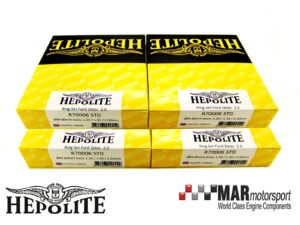
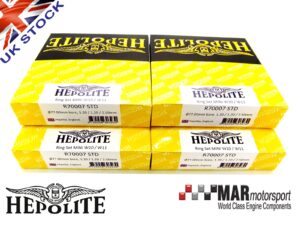
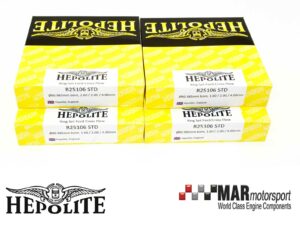
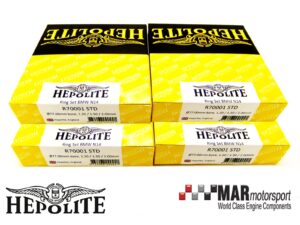

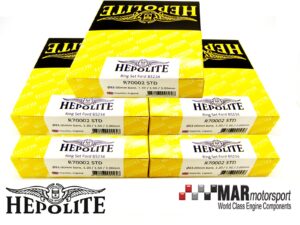
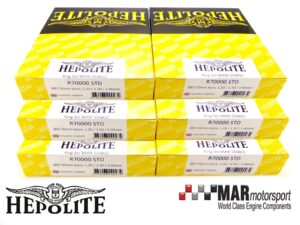
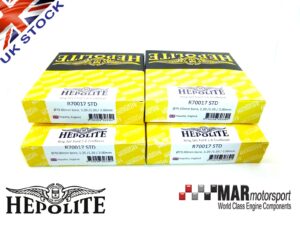
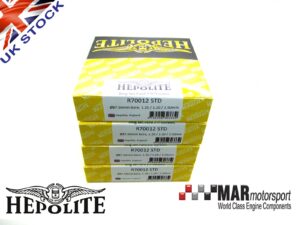
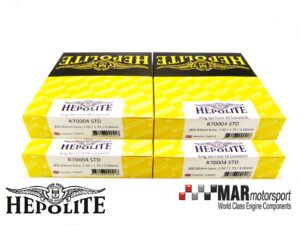
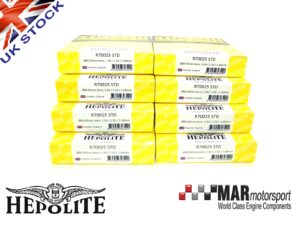


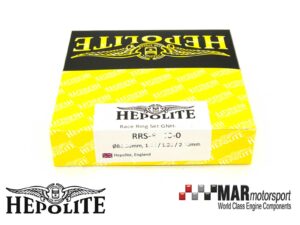
 BMW
BMW Ford
Ford MINI
MINI Porsche
Porsche Vauxhall
Vauxhall VW / Audi
VW / Audi E46 M3
E46 M3 E90 / E92 M3
E90 / E92 M3 F82 M4
F82 M4 F22 M240i
F22 M240i Focus RS MK 1
Focus RS MK 1 Focus RS Mk 2
Focus RS Mk 2 Focus RS MK 3
Focus RS MK 3 Focus ST MK 3
Focus ST MK 3 Fiesta ST150
Fiesta ST150 Fiesta ST180
Fiesta ST180 Sierra Cosworth
Sierra Cosworth Escort RS2000
Escort RS2000 MINI Cooper S R53
MINI Cooper S R53 MINI Cooper S R56
MINI Cooper S R56 MINI Cooper S F56
MINI Cooper S F56 MINI Cooper F56
MINI Cooper F56 Astra H VXR
Astra H VXR Astra J VXR
Astra J VXR Corsa D VXR
Corsa D VXR Corsa E VXR
Corsa E VXR Audi TTRS
Audi TTRS Audi RS 3
Audi RS 3 Golf 6 GTi
Golf 6 GTi Golf 7 GTi
Golf 7 GTi